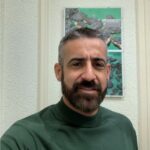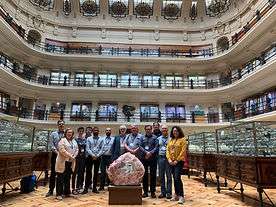Proyecto MINDeSEA
Inicio » Proyecto » Proyecto europeo » Proyecto MINDeSEA
Información General
Información administrativa
Descripción del proyecto
MINDeSEA is a GeoERA research project. The GeoERA Co-Fund action is a joint contribution of 45 national and regional Geological Survey Organisations from 32 European countries “Establishing the European Geological Surveys Research Area to deliver a Geological Service for Europe (GeoERA)”. This is an ERA-NET action under Horizon 2020. The aim of GeoERA is to fund transnational projects contributing to the best use and management of the subsurface, addressing the following four themes: Geo Energy, Ground Water, Raw Materials and Information Platform.
Objetivos
The project MINDeSEA results of the collaboration between eight GeoERA Partners and four Non-funded Organizations at various points of common interest for exploration and investigation on seafloor mineral deposits. This project addresses an integrative metallogenetic study of principal types of seabed mineral resources (hydrothermal sulfides, ferromanganese crusts, phosphorites, marine placers and polymetallic nodules) in the European Seas.
The MINDeSEA working group has both knowledge of and expertise in such types of mineralisation, providing exploration results, sample repositories and databases to produce innovative contributions. The importance of submarine mineralisation systems is related to the abundance and exploitation-potential of many strategic metals and Critical Raw Materials (CRM), necessary for the modern society development.
The geographical scope of the proposed work programme, with a pan-European ambition, includes all the regional seas around Europe,including Exclusive Economic Zones (EZZ) and Extended Continental Shelfs (ECS), comprising the Atlantic Ocean, the Mediterranean Sea, the Baltic Sea and the Black Sea (Fig. 1).
The objectives of this project are the following:
-
Characterise deposit types.
-
Characterise the trace element content of the deposit type including CRM.
-
Identify the principal metallogenic provinces.
-
Develop harmonised mineral maps and datasets of seabed deposits incorporating GSO datasets, along with mineral-potential and prospectivity maps.
-
Demonstrate how the cases study results can be used in off-shore mineral exploration.
-
Analyse present-day exploration and exploitation status in terms of regulation, legislation, environmental impacts, exploitation and future directions.
-
Demonstrate efficiency of a pan-European research approach to understanding seabed minerals and modes of exploration.

Figure 1
Pan European seas with delimitations of EZZ (yellow line) and ECS (pink line) for each country. EEZ limits based on Fanders Marine Institute (2018). Maritime Boundaries Geodatabase: Maritime Boundaries and Exclusive Economic Zones, version 11. ECS limits based on: http://continentalshelf.org
Actividades
Lead: IGME-Spain. Contact: Francisco Javier González
The specific aim for this project proposal is to stablish the metallogenic context for different seabed mineral deposits with economic potential in the pan-European setting.
This study will publish marine resource information, cases study and maps; identify areas for responsible resource exploration and extraction; inform management and Marine Spatial Planning.
Lead: IGME-Spain. Contact: Teresa Medialdea
The principal aim of the Dissemination and Exploitation plan is to inform and engage the wider stakeholder community, in order to maximise its impact.
The plan will provide the guidelines to communicate and disseminate the MINDeSEA outputs in such a way that they best support efficient and sustainable management of the seabed, national and EU policy makers, and responsible and publicly acceptable exploration, exploitation and use of submarine mineral resources and the marine environment by Europe’s Industry.
Lead: NGU-Norway. Contact: Henrik Schiellerup
The principal aim of MINDeSEA WP3 is to update and compile existing data on marine sulphides in European waters, including their contained base, noble and special metals. Compiled and collected data will be interpreted in context with existing genetic models and used to assess the potential for European SMS deposits.
Lead: IGME-Spain. Contact: Francisco Javier González
The target for MINDeSEA WP4 is to update and further develop the mapping and metallogenic models of marine ferromanganese crusts, phosphorites and their associated strategic and critical raw materials (CRM) across all European seas.
Lead: HSGME-Greece. Contact: Irene Zananiri
The target of MINDeSEA WP5 is to update and further develop the mapping and metallogenic models of marine placer deposits across all European seas
Lead: LNEG-Portugal. Contact: Pedro Ferreira
The principal aim of MINDeSEA WP6 is to compile and update existing data on polymetallic nodules in European waters, including their composition and genesis. Compiled and collected data will be interpreted in context with existing genetic models and used to assess the potential for European polymetallic nodules deposits.
Lead: IGME-Spain. Contact: Luis Somoza
The target for MINDeSEA WP7 is (i) to create a new dataset on the distribution of the explored areas for submarine mineral resources in Europe; (ii) to propose recommendations for new unexplored areas; and (iii) to recommend pilot areas with high potential of discovering new submarine mineral resource mineral accumulations.
Lead: GSI-Ireland. Contact: Xavier Monteys
The principal aim of MINDeSEA WP8, is designed to act as a broker between all project partners, work package leaders and GeoERA’s Information Platform (GIP). Together we will devise the best approach for harmonising, standardising and openly providing MINDeSEA information and outputs.
Información adicional
Conferences, Seminars and Workshops:
- EGU 2020, Vienna (Austria)
- PhDay 2019, Madrid (Spain)
- EU Raw Materials Week 2019, Brussels (Belgium) ORAMA Side event.
- Goldschmidt 2019, Barcelona (Spain)
- Conferencia Esri España 2018, Madrid (Spain)
- Marine Minerals: A New Resource for the 21st Century Geological Society London (UK)
- Foro Naval 2018, Madrid (Spain)
- 83rd Thessaloniki International Fair (Greece) September 2018 on Geo-ERA Raw Materials
- Underwater Mining Conference 2018, Bergen (Norway)
Publications
- 09-2021 Growth of ferromanganese crusts on bioturbated soft substrate, Tropic
Seamount, northeast Atlantic ocean - 04-2021 The Interactive Role of Hydrocarbon Seeps, Hydrothermal Vents and Intermediate Antarctic/Mediterranean Water Masseson the Distribution of Some Vulnerable Deep-Sea Habitats inMid Latitude NE Atlantic Ocean
- 03-2021 GeoERA Raw Materials to support Europe’s resilience on raw materials
- 03-2021 High-resolution multibeam bathymetry of the northern Mid-Atlantic Ridge at 45–46° N: the Moytirra hydrothermal field
- 12-2020 Discriminating formation and accumulation processes of some strategic metals in Fe-Mn deposits of the Atlantic Ocean
- 12-2020 Low-temperature, shallow-water hydrothermal vent mineralization following the recent submarine eruption of Tagoro volcano (El Hierro, Canary Islands)
- 11-2020 Multidisciplinary Scientific Cruise to the Northern Mid-Atlantic Ridge and Azores Archipelago
- 06-2020 Are the pan-European seas a promising source for critical metals supply? The project GeoERA-MINDeSEA
- 02-2020 Pesca, energías marinas, recursos minerales y la planificación espacial marina
- 09-2019 Iron isotopes on Fe-Mn crusts from Canary Islands Seamount Province as records of genetic processes in their growth history
- 07-2019 Hydrogenetic, Diagenetic and Hydrothermal Processes Forming Ferromanganese Crusts in the Canary Island Seamounts and Their Influence in the Metal Recovery Rate with Hydrometallurgical Methods
- 01-2019 Morphostructure of the Galicia continental margin and the adjacent deep ocean floor: From hyperextended rifted to convergent margin styles
- 12-2018 MINDeSEA: Un proyecto europeo que cartografía los depósitos minerales submarinos
- 11-2018 La minería submarina es la nueva frontera
- 07-2018 High-Resolution Analysis of Critical Minerals and Elements in Fe–Mn Crusts from the Canary Island Seamount Province (Atlantic Ocean)
Phone +34 913 495 864
C/ Ríos Rosas, 23
Madrid (Spain), CP. 28003
Personal
Equipo
Colaboradores
Departamentos y grupos implicados
Departamentos
Publicaciones
Lista de publicaciones
Multimedia
Galería de vídeos relacionados
Eventos y noticias
Eventos
Noticias
Entidades financiadoras y colaboradoras
Entidades financiadoras
Con el apoyo de:





